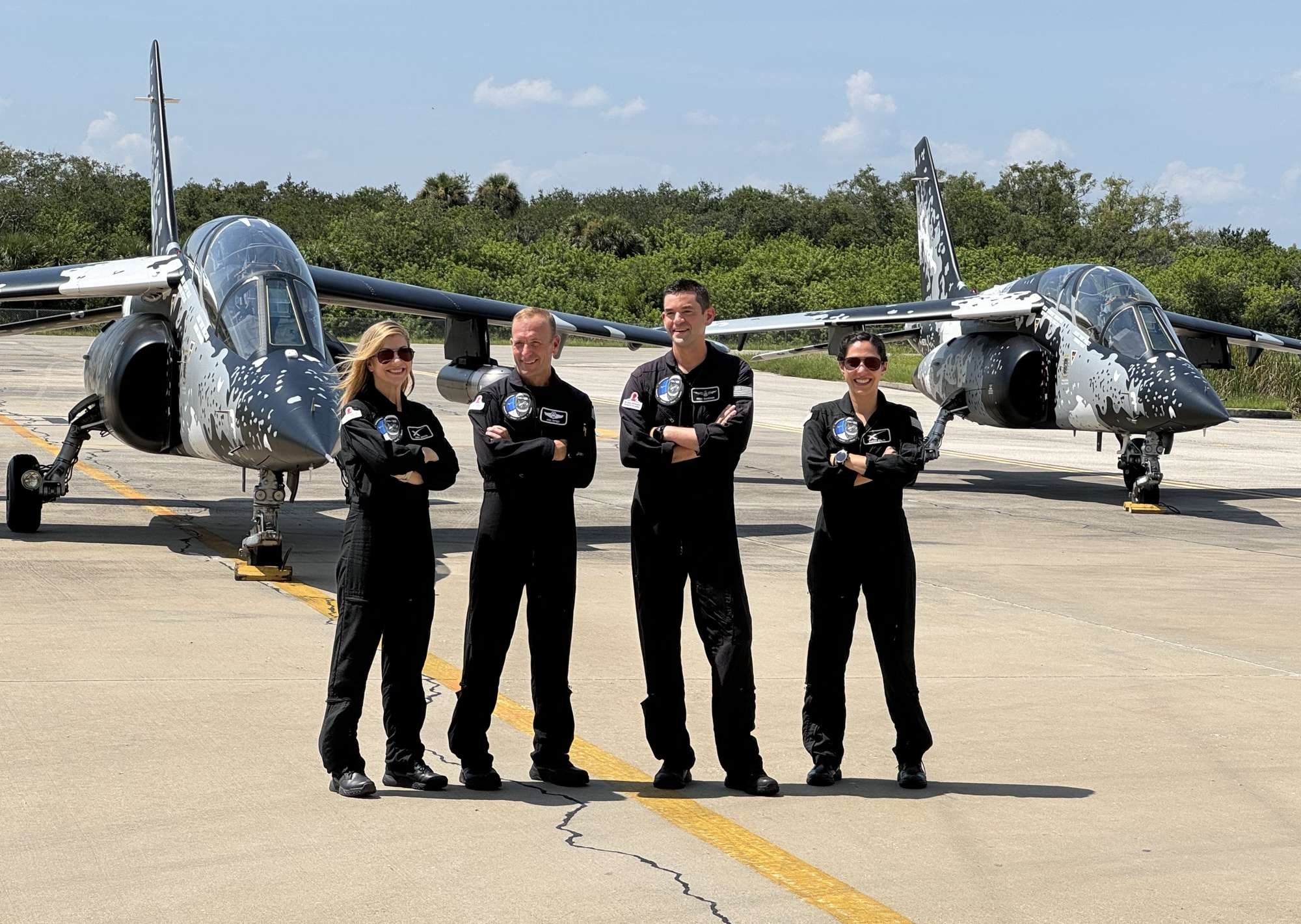Blog
Polaris Dawn private astronaut mission ready for launch

Top Stories Tamfitronics
KENNEDY SPACE CENTER, Fla. — A private astronaut mission that will attempt the first commercial spacewalk on a is ready for launch in a week on a SpaceX Crew Dragon.
The four-person crew of the Polaris Dawn mission arrived here Aug. 19 for final preparations for their launch, scheduled for the early morning hours of Aug. 26 on a Falcon 9 from Launch Complex 39A.
The mission, designed to last five days, will take the spacecraft to altitudes as high as 1,400 kilometers, the highest for a crewed mission since Apollo 17 went to the moon in 1972. The mission will also test laser intersatellite links with SpaceX Starlink spacecraft and perform 40 experiments.
However, the highlight of the mission will be a spacewalk, the first conducted on a private mission and the first done from a Crew Dragon spacecraft. All four members will don new extravehicular activity (EVA) suits developed by SpaceX as the cabin will be brought to vacuum. Two of the four will briefly emerge from the hatch to conduct tests during the two-hour spacewalk.
“The idea is to learn as much as we possibly can about this suit and get it back to the engineers to inform future suit design evolutions,” Jared Isaacman, the billionaire backing the Polaris program of missions and commander of Polaris Dawn, said at a press conference shortly after arriving at KSC. “It feels like a huge honor to have that opportunity to test to test it out on this flight.”
That spacewalk is scheduled for flight day three, but preparations will begin just an hour after launch when the crew begins a prebreathing protocol, gradually lowering the atmospheric pressure inside the Crew Dragon cabin and increasing the oxygen concentration, said Sarah Gillis, a SpaceX engineer who is a mission specialist on the flight.
The crew will put on the suits on flight day two for mobility tests inside the spacecraft. During the spacewalk itself, two of the astronauts, who she identified only as EV1 and EV2, will go through the hatch for 15 to 20 minutes at a time, one after the other, for additional suit tests.
While earlier illustrations released by SpaceX showed an astronaut floating free from the spacecraft, linked only by an umbilical, Isaacman said the most they will do is a “hands free” demonstration where only the spacewalker’s feet are attached to mobility aids on the capsule.
“I think the picture was very cool and it’s inspirational, and certainly, you know, the Ed White photo is historic,” he said, referring to a famous photo of NASA astronaut Ed White performing the first American spacewalk in 1965. However, he added, “you want to be very deliberate with your movements. You want to make good use of mobility aids.”
Development of the spacesuit and planning for the spacewalk has taken up much of the planning for the mission. “The EVA probably makes up the majority of the development for Polaris Dawn,” he said, and one with the most risk. “You’re throwing away all of the safety of your vehicle. Your suit becomes your spaceship.”
“EVA is a risky adventure, but again, we’ve done all the preparation,” said SpaceX vice president Bill Gerstenmaier, a former NASA official responsible for the agency’s human spaceflight programs. He noted at the briefing that SpaceX identified and resolved an issue that arose recently when engineers found that static electric discharge could cause a “flammability concern” while the crew is in their suits breathing pure oxygen.
“We’re going to do it as safely as we can, and we’ve got the right protocols and we’ve done the right testing to get ready to go do it,” he said.

Flight profile
The mission is scheduled to launch between 3:30 and 7 a.m. Eastern Aug. 26 in one of three instantaneous launch windows. Isaacman said the launch times were selected by SpaceX to minimize the micrometeoroid and orbital debris impact risk to the mission given its unconventional orbit.
The Falcon will place the Crew Dragon into an initial orbit with a perigee of 190 kilometers and apogee of 1,200 kilometers. Dragon will later in the first day of the mission raise that apogee to 1,400 kilometers.
After 10 hours at that higher apogee, Dragon will lower that apogee to 700 kilometers, which will be used for the spacewalk on flight day three. The following day will feature a Starlink demonstration, said Anna Menon, another SpaceX engineer flying on Polaris Dawn as a mission specialist. “You’ll want to stay tuned for that,” she said, but didn’t go into details about the planned demonstrations.
Flight day five will be used to complete research projects while lowering the spacecraft’s orbit to prepare for reentry. That reentry will be on flight day six, targeting one of several locations off the Florida coast.
Long time coming
Isaacman and SpaceX announced the Polaris program in February 2022 with three missions planned that will culminate in the first crewed Starship launch. At the time of that announcement, Polaris Dawn was projected to take place in late 2022, but that date slipped repeatedly.
Those delays had been linked to work on the spacesuits, which SpaceX publicly revealed in May. However, Isaacman acknowledged at the press conference that the original schedule was overly ambitious.
“I would say that this is one of the many philosophies that I’ve observed at SpaceX that gets people very motivated,” he said. “You set some very, very ambitious deadlines up front to get people working really hard in the right direction, but there’s lots of good sanity checks along the way.”
He said delays in the mission were not caused by spacesuit development alone, pointing to the extensive work required to get Starlink laser intersatellite links working on the spacecraft. “That was a massive engineering challenge to solve, as was the suit.”
As engineers worked on those technical challenges, the crew performed extensive training. Scott Poteet, a former U.S. Air Force fighter pilot who will fly on Polaris Dawn as pilot, noted at the briefing that he spent 1,500 hours in simulators for combat training during 20 years of Air Force service. In the two and a half years training for Polaris Dawn, he noted the crew spent 2,000 hours in simulators. Other training, he said, ranged from scuba diving to mountain climbing.
Isaacman did not disclose plans for the second Polaris mission, which he said only would build on the first. That mission was at one time suggested to be a reboost or servicing mission for the Hubble Space Telescope, but NASA officials said in June that they were not pursuing options for a private servicing mission.
While Isaacman and his crewmates discussed extensively the technical details of Polaris Dawn, he declined to discuss financial details. He said that the mission will raise money for St. Jude Children’s Research Hospital, like his Inspiration4 mission in 2021 that generated more than $250 million, but did not announce a goal or other fundraising specifics.
Asked at the press conference to offer an estimate of how much he is spending on Polaris Dawn, Isaacman replied, “Not a chance. Good question.”














